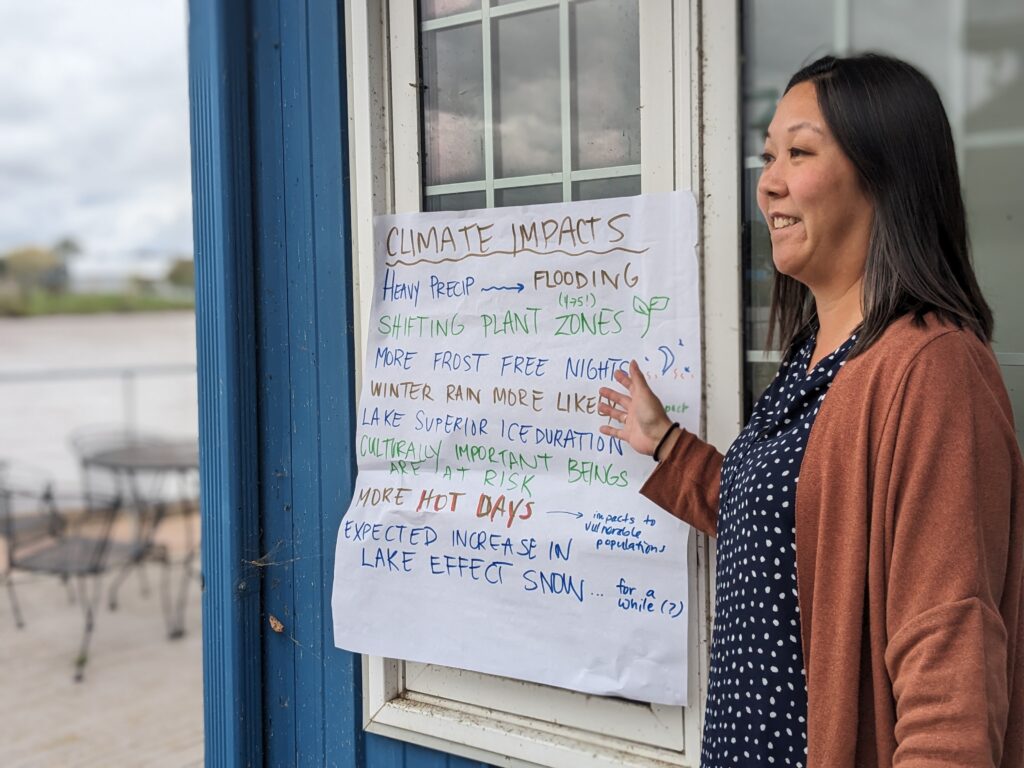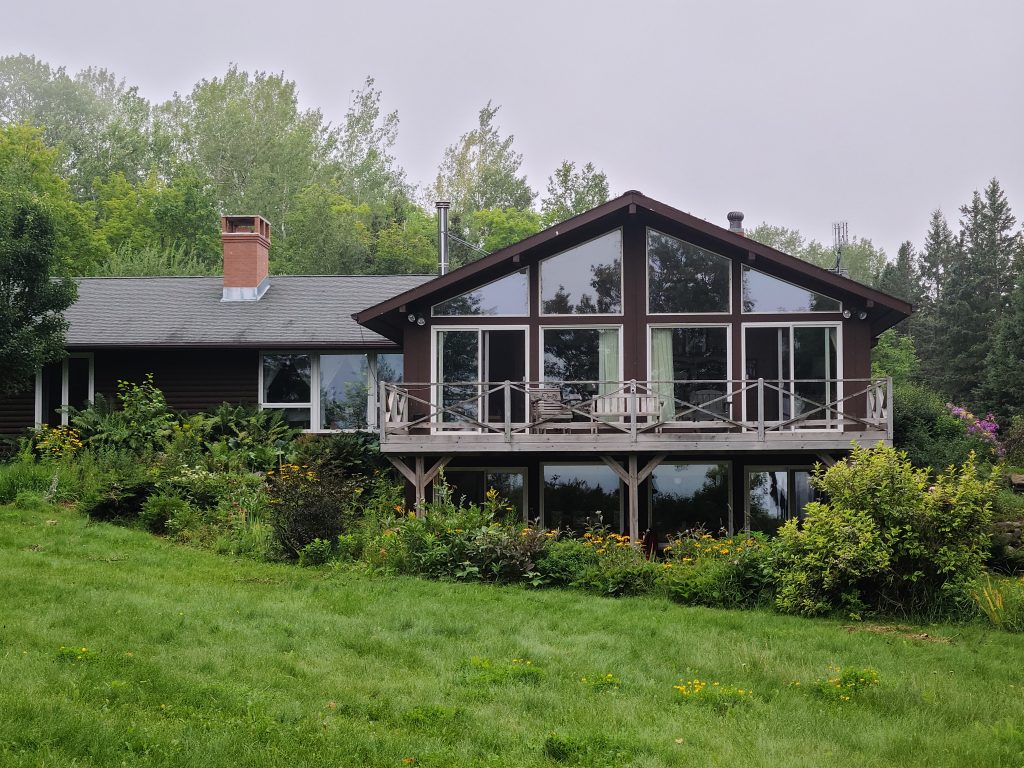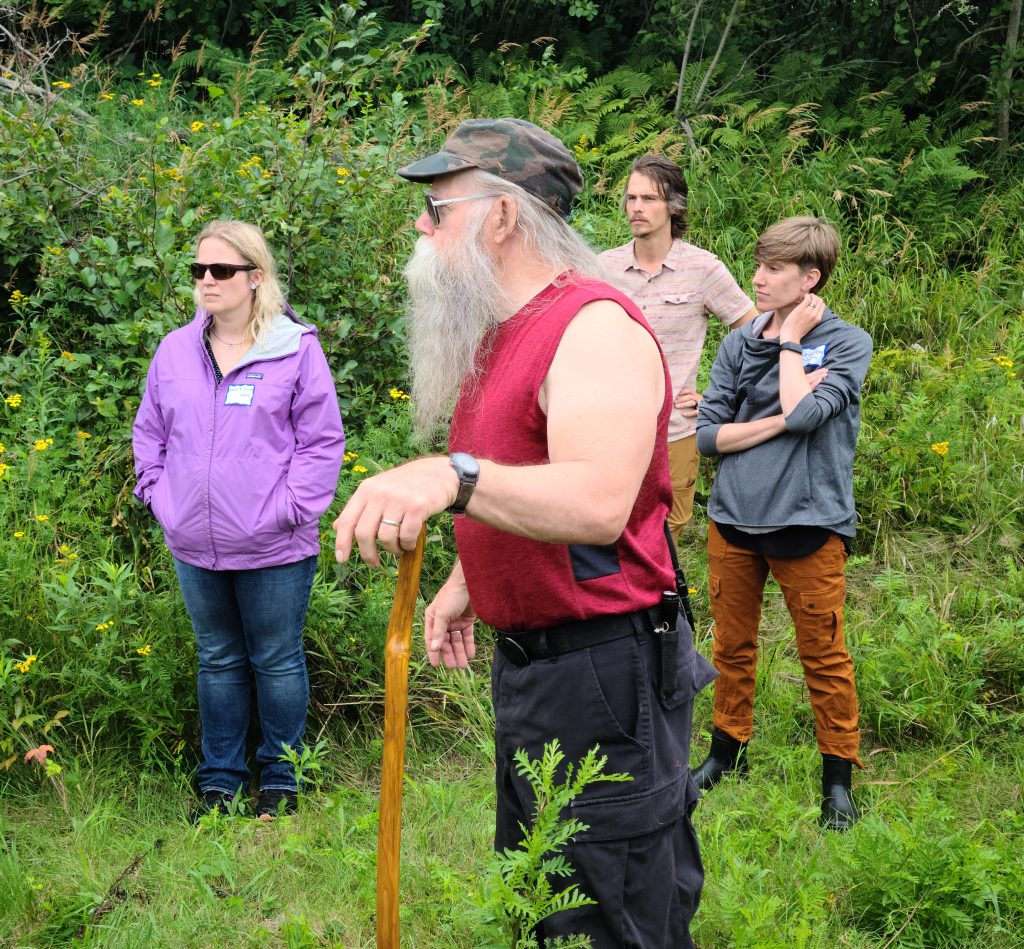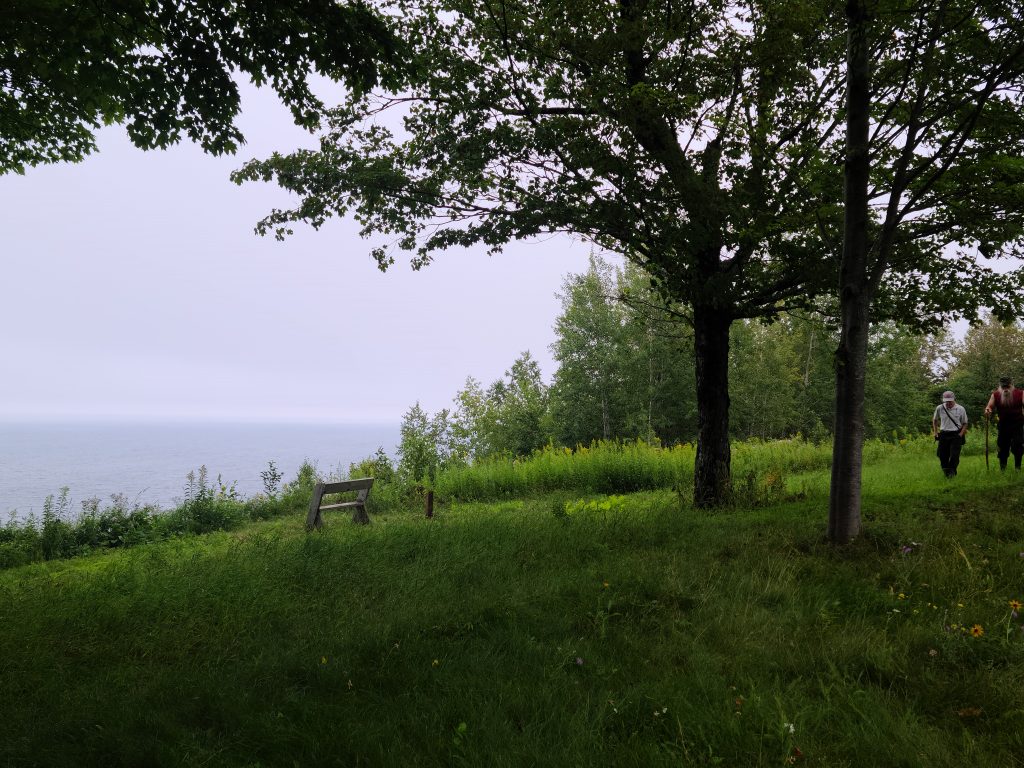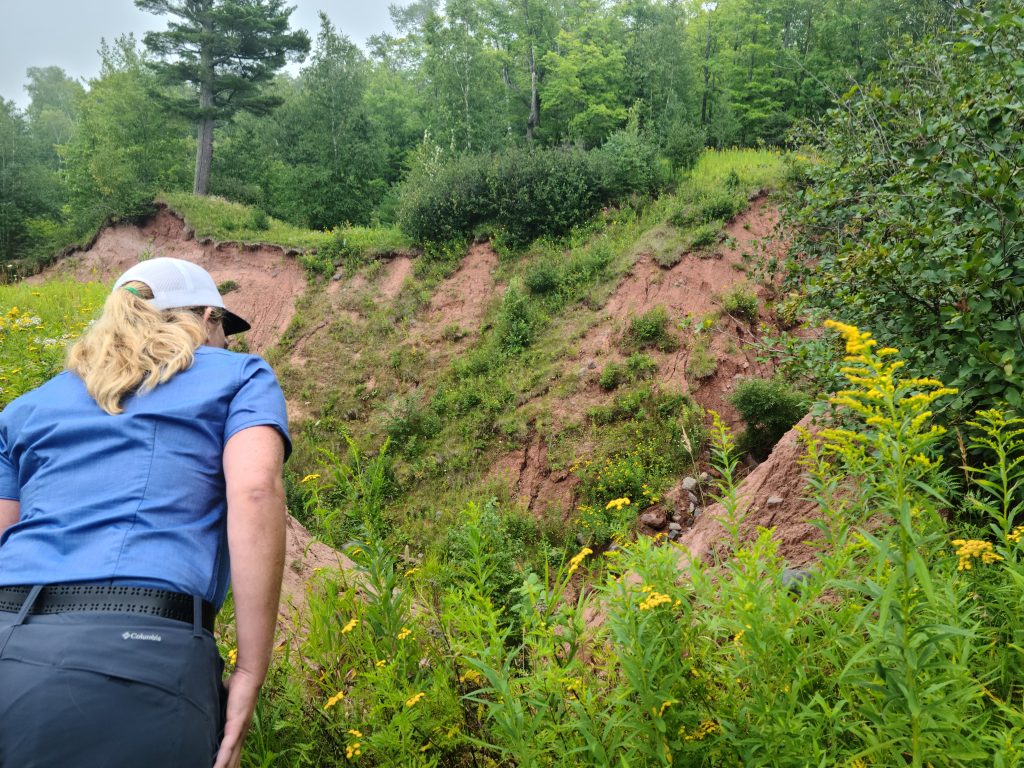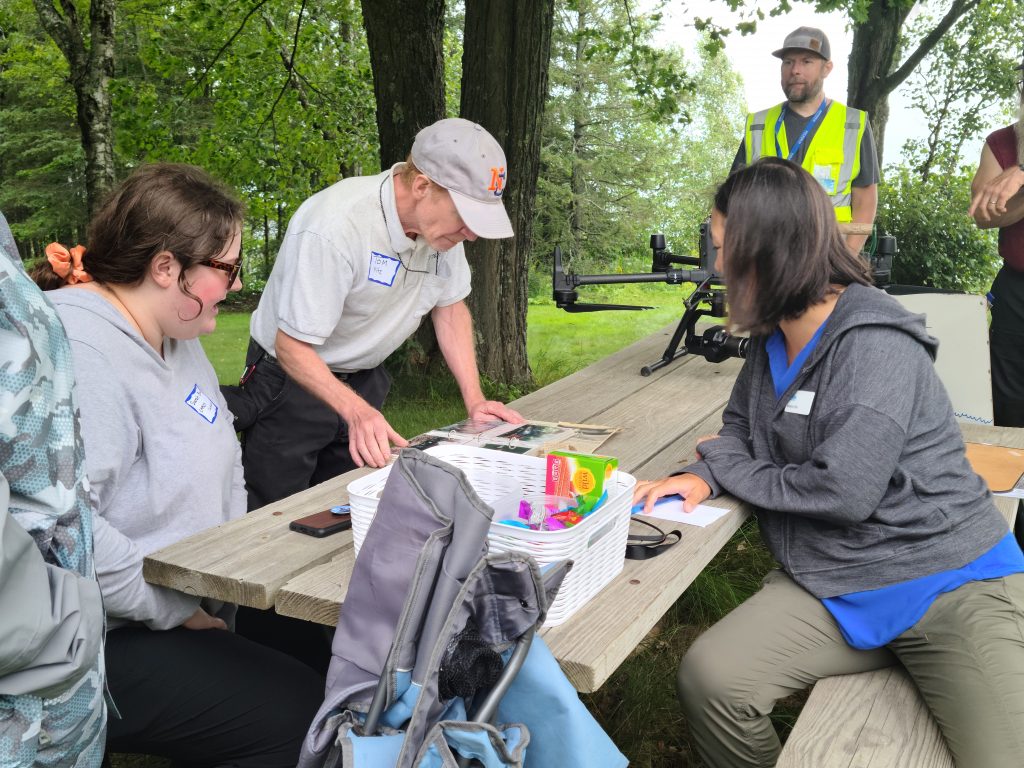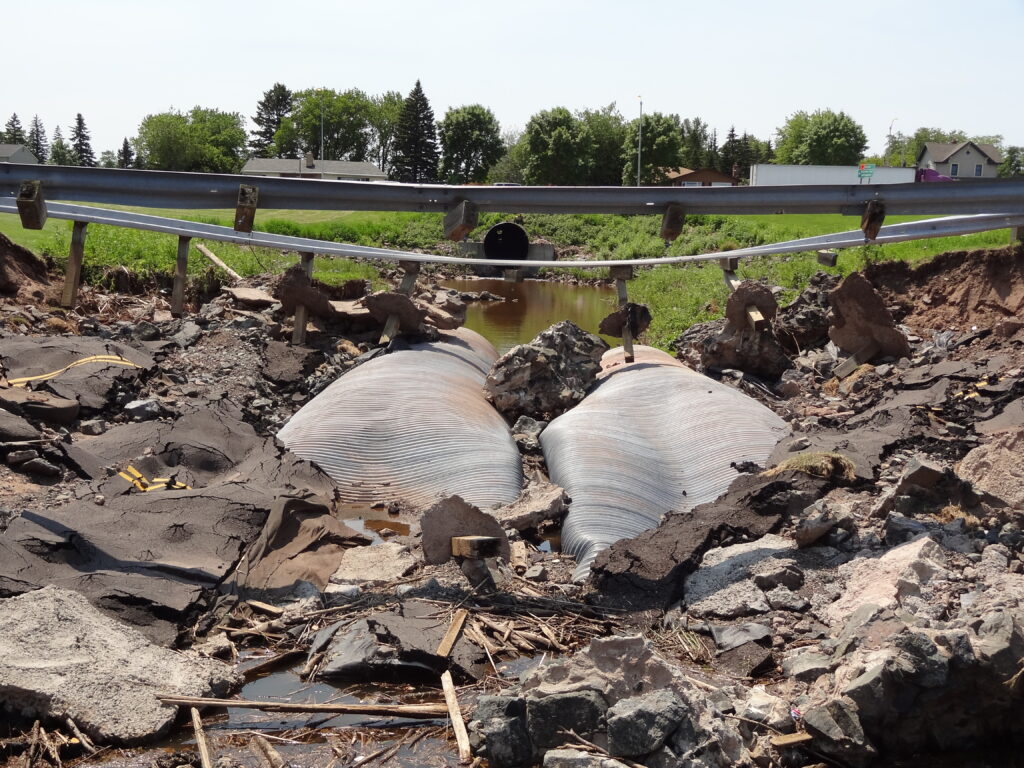Northern Wisconsin communities benefit from climate change program
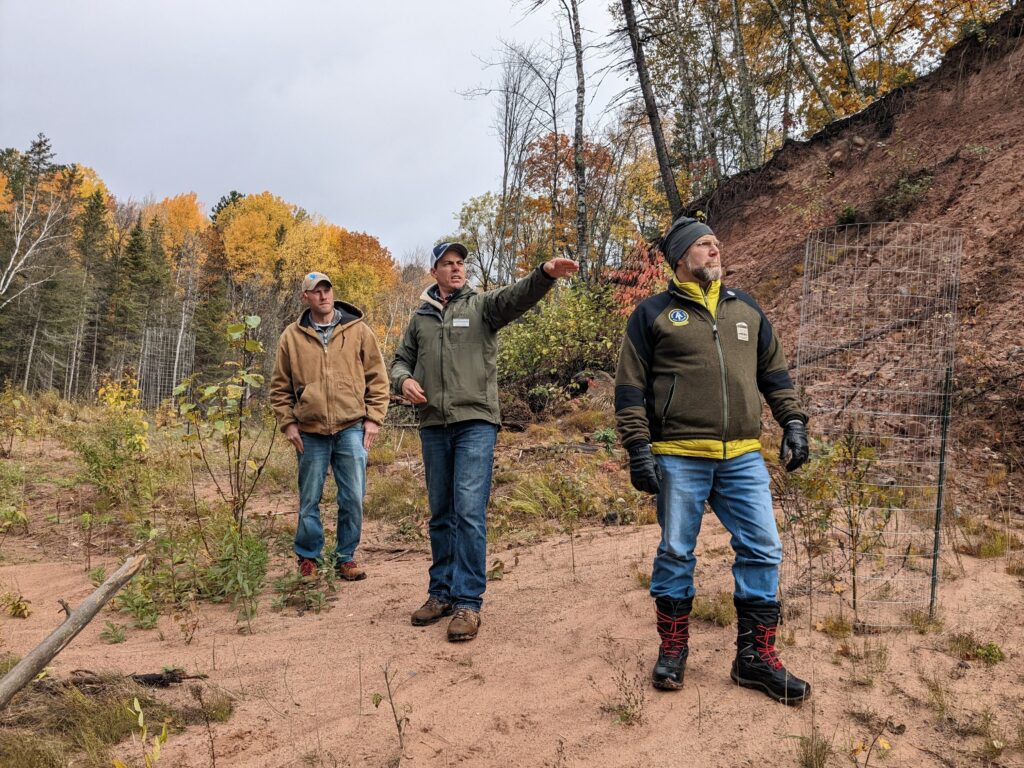
Members of the Lake Superior Climate Champions Program take a field trip to an eroded area in northern Wisconsin. Pictured left to right are Dave Sletten, Matt Hudson and Tony Janisch. Image credit: Karina Heim, Lake Superior Reserve
It’s official: 2023 was the hottest since we’ve been keeping records, according to the National Oceanic and Atmospheric Administration. This can trigger extreme weather events such as storms and flooding. Northern Wisconsin is not immune from the impacts of climate change and communities are taking action.
Leaders in several northern Wisconsin counties and cities were chosen to participate in a Lake Superior Climate Champions Program organized by Wisconsin Sea Grant and the Lake Superior National Estuarine Research Reserve in 2023. The program provided funding and guidance to two teams to work on goals of their choosing that addressed climate change.
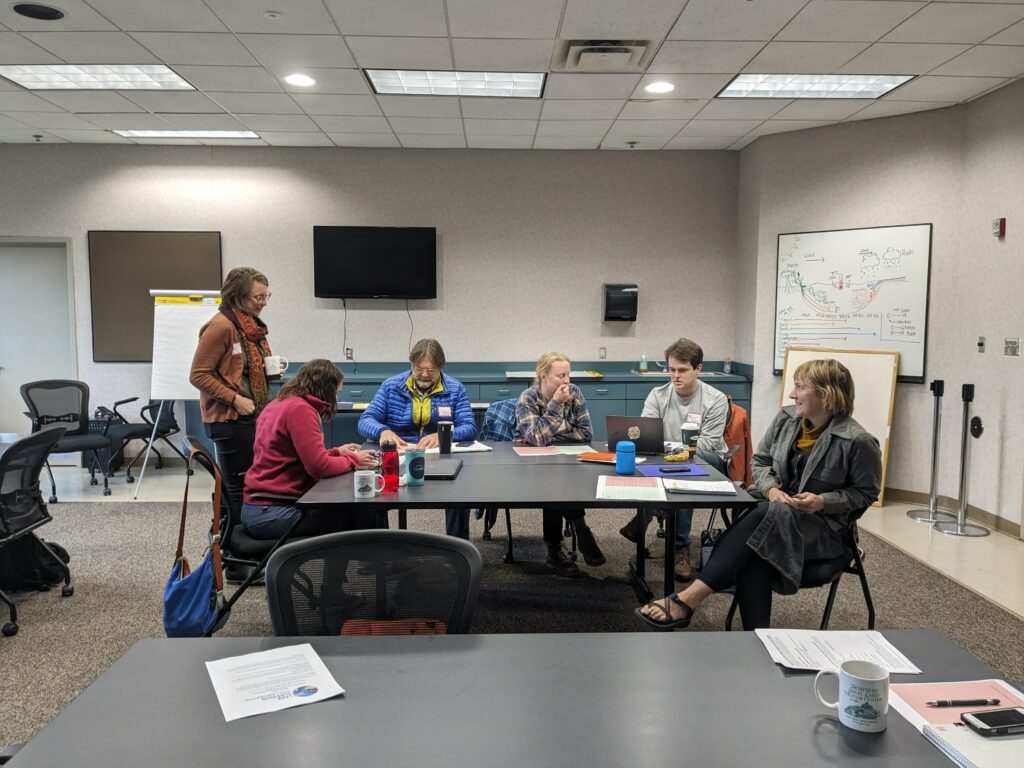
Members of the Washburn/Ashland Climate Champions team attend a coastal resilience adaptation workshop organized by the Northern Institute of Applied Climate Science. Pictured left to right are Danielle Shannon, Sara Hudson, Tony Janisch, Bree Schabert, Matias Valero and Jessica Jacobson. Image credit: Karina Heim, Lake Superior Reserve
The first team from the cities of Washburn and Ashland included Tony Janisch, Washburn assistant city administrator, and Sara Hudson, Ashland park and recreation director and city forester. Their project involved creating the outline of a coastal adaptation plan for their cities that focused on flood resilience and climate adaptation. They also developed a project priorities list, connected with other communities at a climate-focused annual conference by the Great Lakes and St. Lawrence Cities Initiative in Chicago and brought a coastal resilience adaptation workshop to the region in collaboration with the Northern Institute of Applied Climate Science and the Lake Superior Collaborative.
During a webinar, Janisch described how the contacts he made during the Great Lakes and St. Lawrence Cities Initiative Conference helped him find funding for a long-standing problem in Washburn.
“We have some significant coastal erosion at one of our parks in the city. I had spent three years trying to find funding to start the work. I was connected with someone and then was able to get some FEMA funding. So, we have an engineer now doing design work for how to solve the problem,” Janisch said.
Another erosion project Janisch found possible funding sources for involves Thompson’s Creek, which runs underneath a local highway and along another road. “There was some erosion going on with one of the creek bends that’s eating away at one of our side roads. It’s very possible that it could start eroding the right-of-way on the highway itself,” Janisch said.
Hudson said the champions program, “…Opened up a couple projects that have been on the back burner in my mind. And then also just creating more of a living shoreline along our Baker City Creek Estuary and along the ore dock shoreline that is there. It’s been a really good process.”
The second team included emergency managers from Ashland, Bayfield, Douglas and Iron counties. These are Dorothy Tank (retired from Ashland County), Dave Sletten (Douglas County), Stacy Ofstad (Iron County) and Meagan Quaderer (Bayfield County) Their project focused on developing a digital form to record road maintenance activities for Great Lakes coastal counties in Wisconsin and beyond.
Quaderer said that development of the road maintenance form was timely. “This spring, the region had a lot of flooding and a lot of [road] damage. So, we actually had a real-world application of the document, especially in Bayfield County.”
The team presented the form at a Wisconsin Northwest Region Emergency Managers Meeting and it garnered their interest as well as that of representatives from Minnesota. The team was asked to present the form again to the Statewide Hazard Mitigation Committee. Those members saw the overwhelming value of the tool.
“I think it’s something that will be used here within our four counties but also hopefully, within both states,” Sletten said.
Tank said the form has already been used in Ashland County for a number of federally declared disasters. “It was not only approved at the state level, but by FEMA. It contained all the information they wanted,” she said.
The Climate Champions Program was facilitated by Karina Heim with the Reserve and Natalie Chin with Sea Grant. They recently released the call for applications for this year. Apply at this link: https://go.wisc.edu/0385yk. The deadline is March 15.
For more general information, visit: https://go.wisc.edu/am468e.
The post Northern Wisconsin communities benefit from climate change program first appeared on Wisconsin Sea Grant.News Releases | Wisconsin Sea Grant
News Releases | Wisconsin Sea Grant
https://www.seagrant.wisc.edu/news/northern-wisconsin-communities-benefit-from-climate-change-program/

